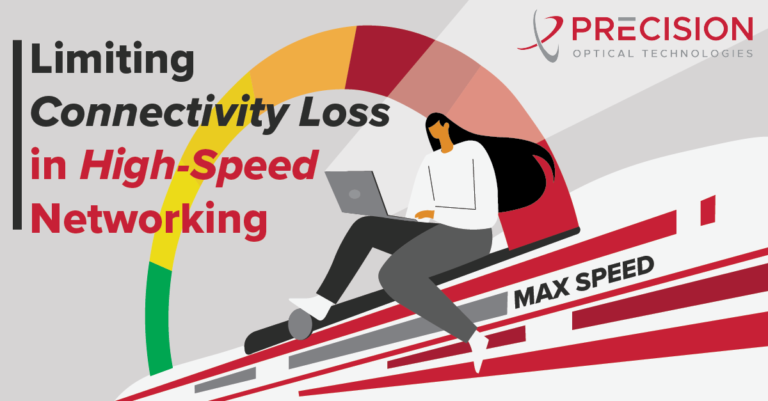
Cutting Through the Confusion: Limiting Connectivity Loss in High-Speed Networking

In this blog, our experts review strategies and best-practices to limit connectivity loss.
Loss Types
The two most important types of connectivity loss to consider are insertion loss and return loss. Insertion loss (IL) results from the insertion of additional devices, which spreads the signal thin. Return loss (RL) is related to the factors that limit the amount of signal reflected back toward the source.
As a network is built out, damage to the fiber caused by issues such as micro-bending, over-tensioning or crush and impact can create insertion loss that develops over time. Factors such as gaps or breaks in the fiber, contamination and strain can likewise contribute to return loss. The adage about an ounce of prevention being worth a pound of cure is especially relevant here. Limiting the complexity of fiber routes, minimizing the number of splices and avoiding the use of mass-produced fiber cables with subpar loss specifications will limit loss.
If loss is already an issue, making separate measurements for both IL and RL can be a key strategy for pinpointing and addressing it. For example, an optical fiber with a break may still be able to transmit light, which would result in a low IL reading — and a problem that goes undetected. A separate RL measurement can help to pinpoint the location of the break.
Role of the Ferrule
An even more insidious contributor to both types of loss is related to an imperfection that is built into the system by design.
Inside of a fiber-optic connector, the fiber itself is held by a tiny ceramic or metal structure known as a ferrule. When two connectors mate, a narrow gap between them serves to prevent potential damage from contact between the two fiber ends. But this gap also introduces loss, which is addressed by clever polishing strategies that take advantage of the ability of light to be reflected.
Currently, there are three main types of polish in wide industry use: physical contact (PC), ultra-physical contact (UPC) and angled physical contact (APC); each has a significant impact on loss levels. PC polish adds a convex finish to the end face to decrease the surface area of the imperfection; it can be considered an acceptable method when insertion loss tolerance is relatively high. UPC adds further refinement through extended polishing, producing a more reliable signal with lower insertion loss. Its drawback, however, becomes apparent when subjected to repeat mating and un-mating: The quality of the fiber surface begins to deteriorate, resulting in increased return loss. APC adds an angle to the convex surface that tightens the connection and re-channels back reflection into the fiber cladding itself to nullify its impact. APC is considered the polish method of choice for applications with lower levels of loss tolerance, such as fiber to the home (FTTH) deployment. However, APC ferrules cannot be mated with the other types, potentially limiting their utility for legacy systems.
Regardless of which type of polish is used, keeping ferrules clean is another key strategy for limiting connectivity loss; this is especially important before and after testing.
Coming in Under Budget
The total amount of loss that is acceptable within a network is known as a “loss budget,” and represents the estimated sum of the losses of all cable plant components. If actual measurements taken with a light source and power meter result in a value that is significantly over budget, this is a sign that each segment of the system should be tested to determine the cause of loss.
There are various online reference charts for loss specs on various components, as well as smartphone apps that can calculate loss budgets.
Conclusion
As stated at the outset of this article series, there are numerous aspects to high-speed networking. The experts at Precision Optical Technologies are an ideal resource for helping to network professionals to cut through the confusion of building lasting solutions.






